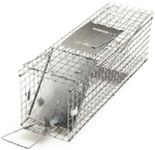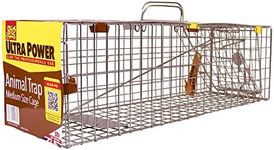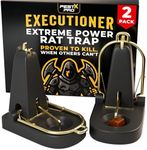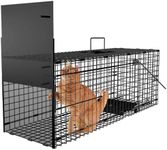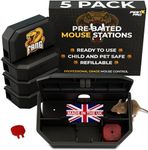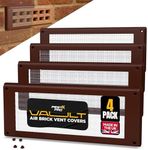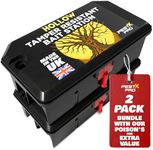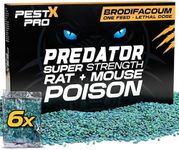Buying Guide for the Best Trap For Rabbits
When choosing a trap for rabbits, it's important to consider the type of trap that will be most effective for your needs, the environment in which you'll be using it, and the humane aspects of trapping. Different traps are designed for different purposes, so understanding the key specifications will help you make an informed decision that aligns with your goals, whether it's for pest control, relocation, or research purposes.Type of TrapThe type of trap is crucial because it determines how the rabbit will be captured. Common types include live traps, which capture the rabbit without harming it, and lethal traps, which are designed to kill the rabbit. Live traps are often preferred for humane reasons and for those who wish to relocate the animal. Lethal traps might be used in situations where rabbit populations are causing significant damage and other methods have failed. Consider your purpose: if you aim to relocate or study the rabbit, a live trap is appropriate. If population control is the goal, and it's legal in your area, a lethal trap might be considered.
Size of TrapThe size of the trap is important to ensure that it is suitable for capturing rabbits without causing them harm. Traps that are too small may injure the rabbit or fail to capture it, while traps that are too large may not trigger properly. Generally, a trap that is about 24 to 30 inches long, 7 to 9 inches wide, and 7 to 9 inches high is suitable for rabbits. Choose a size that comfortably accommodates the rabbit, allowing it to enter fully without feeling cramped, which increases the likelihood of a successful capture.
Material and DurabilityThe material and durability of the trap affect its longevity and effectiveness. Traps are typically made from metal, plastic, or wood. Metal traps, often made of galvanized steel, are durable and weather-resistant, making them suitable for outdoor use. Plastic traps are lightweight and easy to clean but may not be as durable. Wooden traps are less common and may not withstand the elements as well. Consider where and how often you will use the trap. For frequent outdoor use, a durable metal trap is recommended. For occasional use or indoor settings, plastic may suffice.
Ease of UseEase of use refers to how simple it is to set up and operate the trap. A trap that is easy to set and check will save time and reduce frustration. Look for traps with straightforward mechanisms and clear instructions. Some traps have features like one-handed operation or easy-release doors, which can be beneficial. If you're new to trapping, opt for a trap that is known for its user-friendly design to ensure a smooth experience.
Safety FeaturesSafety features are important to protect both the user and the rabbit. Traps should have mechanisms to prevent accidental injury to the user during setup and operation. For live traps, features that minimize stress and injury to the rabbit, such as smooth edges and adequate ventilation, are crucial. Consider traps with safety latches or handles that keep your hands away from the trap's action area. If humane capture is a priority, ensure the trap is designed to keep the rabbit calm and unharmed until release.
